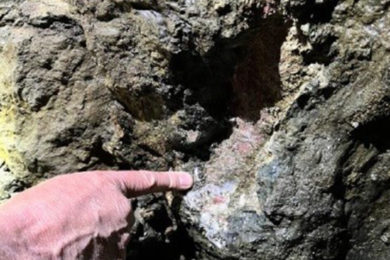 Collaboration between the CSIRO’s Minerals Down Under and Australia’s Brookhaven National Laboratory has led to the development of a new massively paralleled detector for fast element mapping in X-ray fluorescence based analyses. A prototype deployed on to the XFM beam line at the Australian Synchrotron provides the ability to map trace elements very rapidly and over centimetre scales including whole thin sections. The new Maia 384 detector fired its first shots at the XFM beam line at the Australian Synchrotron in June and has immediately been engaged in a wide range of user experiments ranging from minerals and environmental science through to biology, medical imaging and materials science.Maia has been developed by CSIRO and BNL for SXRF imaging on the XFM beamline at the Australian Synchrotron. A 96 detector prototype demonstrated the capacity of the system for real-time deconvolution of complex spectral data using an embedded implementation of the Dynamic Analysis method and acquiring highly detailed images up to 77 M pixels spanning large areas of complex mineral sample sections.
Collaboration between the CSIRO’s Minerals Down Under and Australia’s Brookhaven National Laboratory has led to the development of a new massively paralleled detector for fast element mapping in X-ray fluorescence based analyses. A prototype deployed on to the XFM beam line at the Australian Synchrotron provides the ability to map trace elements very rapidly and over centimetre scales including whole thin sections. The new Maia 384 detector fired its first shots at the XFM beam line at the Australian Synchrotron in June and has immediately been engaged in a wide range of user experiments ranging from minerals and environmental science through to biology, medical imaging and materials science.Maia has been developed by CSIRO and BNL for SXRF imaging on the XFM beamline at the Australian Synchrotron. A 96 detector prototype demonstrated the capacity of the system for real-time deconvolution of complex spectral data using an embedded implementation of the Dynamic Analysis method and acquiring highly detailed images up to 77 M pixels spanning large areas of complex mineral sample sections.








